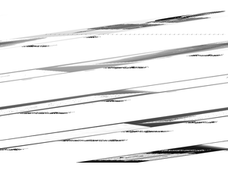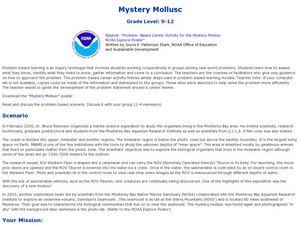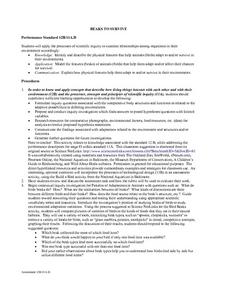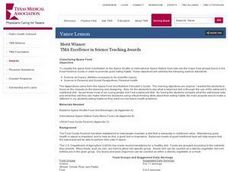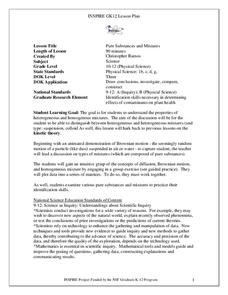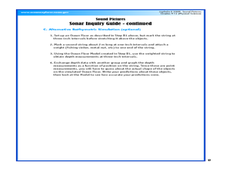Curated OER
Now, Take a Deep Breath
Students define several laws of pressure and see how they relate to scuba diving. In this ocean explorer lesson plan students answer questions and complete an activity.
Curated OER
What's Eating Your Ship?
Students examine the processes that contribute to the deterioration of shipwrecked in shallow and deep water. In this research lesson students explore shipwrecks and how the deterioration process works. Students fill out the questions...
Curated OER
Mystery Mollusc
Students investigate the different regions of our oceans by researching the Internet. In this oceanography lesson, students discover the different jobs related to ocean research and examine their roles by reading related websites. ...
Curated OER
From Polymers to Bioplastics: Looking Toward Finding Renewable Resources
Students investigate the properties of polymers. In this chemistry lesson, students explain the importance of energy sources. They produce a bioplastic from the lab and evaluate its structural integrity.
Curated OER
Beaks To Survive
Students discuss and identify the types of adaptations that are made by different organisms in order for them to survive. In groups, they describe the features of beaks and discuss how it affects their chances for survival. They share...
NASA
Pop Can Hero Engine
Hang a soda can from a string and watch it spin by the force created by water streaming out of slanted holes. This plan provides background information, detailed materials and procedures, discussion questions, a lab worksheet, and...
Curated OER
Classifying Space Food
Students write a written summary of what they have learned about the astronaut nutritional diet in comparison with their own diet habits.
Curated OER
Pure Substances and Mixtures
Students compare and contrast the properties of substances and mixtures. In this chemistry lesson plan, students simulate spontaneous mixing by performing a short class activity. They differentiate heterogeneous and homogeneous mixtures.
Curated OER
Sound Pictures
Students examine the components of a sonar system. In this physical science lesson students explain how multibeam and sidescan sonar systems are useful to ocean explorers. Students simulate sonar operations in an activity using a motion...
Curated OER
Converting Metric Units and Prefixes
Students investigate the length of various objects. In this measurement lesson, students convert one metric unit to another. They explain the importance of a uniform system of measurement.
Curated OER
Using the Microscope
High schoolers demonstrate their ability to properly make observations using a compound microscope. They prepare an onion skin slide and focus on it in both low and high power. Then they measure the diameter of one of the cells.
Curated OER
What Would You Fly?
Learners, after reading an explanation from a NASA Web site, demonstrate an understanding of the text by writing an essay that applies the information found in the slides to a real-life question.
Curated OER
DNA-a Molecular Identity
Pupils explore about what DNA is and several different DNA typing techniques. They examine three different situations where DNA typing was used to carry out justice. Students also identify and evaluate different uses of DNA typing...
Curated OER
Introduction to Genealogy
Students investigate their own family's genealogy by conducting oral interviews and doing Internet research. In a series of activities, students acquire inquiry and research skills, develop an appreciation of their heritage, and classify...
Curated OER
Row, Tow, Pull Your Boat
Third graders use previous knowledge and research to analyze and solve a scenario relating to the use of simple machines and the Lewis and Clark Expedition. They present their findings to the class in oral presentations.
Curated OER
Beta-Oxidation of Unsaturated Fatty Acids
Pupils work in small groups to determine the amount of protein contained in an unknown sample. They conduct the experiment, plot the points of absorbency, and present their findings to the class.
Curated OER
Water Quality Monitoring
Students work together to gather water samples. They compare and contrast the water quality from different places in the community. They answer discussion questions to complete the lesson.
NASA
Pop! Rockets
Off they go — launching rockets is fun. The lesson plan contains templates to build paper rockets that can be launched from a PVC pipe launcher. Individuals or groups build the rockets and determine the shapes for their fins. Included...
NASA
Foam Rocket
When going for distance, does it make a difference at what angle you launch the rocket? Teams of three launch foam rockets, varying the launch angle and determining how far they flew. After conducting the series of flights three times,...
Mascil Project
Design and Build Your Own Vacuum Cleaner, Hair Dryer or Toy Car
No vacuum cleaner? No problem, just build your own. Scholars apply knowledge of currents to build a model of either a vacuum clear, a hair dryer, or a toy car. While the class completes the activity, instructors consider gender...
Curated OER
Thermodynamics Problems for All of Us: Thermal Management
Pupils evaluate current literature on the Internet and in handouts about the energy considerations for the computer industry and calculate energy needs for real life problems. Working in groups, they present the problem they researched,...
Curated OER
Blast's Cosmic Carnival
Students, after analyzing the history of a concentrator, model how a Genesis spacecraft concentrator works by playing a game. In groups of three or four, after being given materials to work with, are challenged to roll the rubber balls...
Curated OER
Soaring With Air Power
Fourth graders view a Newton's Apple show that explores glider mechanics, explore the four forces, build and fly a glider to specific guidelines. They adjust the glider for greater accuracy and distance using four forces, and assess...
Curated OER
Scientific Investigation- Magnets
Students conduct a scientific investigation to determine if a magnet attracts paper clips through different materials. Students write out their procedures, collect data and present it in a table or chart, and analyze their results.


